Local Extremes of Selected Industry 4.0 Indicators in the European Space—Structure for Autonomous Systems
Abstract
1. Introduction
1.1. Theoretical Background
1.2. Industry 4.0, Unemployment, Labor Market
1.3. Literature Review and Current State of Knowledge
1.4. Research Question and the Proposed Procedure
2. Data Sources and Methods
2.1. Basic Data
2.2. Factors by Eurostat
- Whose highest level of education or training attained is at lower secondary education. At most lower secondary education refers to ISCED (International Standard Classification of Education) 2011 level 0–2 for data from 2014 onwards and to ISCED 1997 level 0–3C short for data up to 2013;
- Who received no education or training (neither formal nor non-formal) in the four weeks preceding the survey.
- (a)
- EU Sustainable Development Goals (SDG) indicator set where it is used to monitor progress towards SDG 9 on industry, innovation and infrastructure. SDG 9, among other things, recognizes the importance of technological progress and innovation for finding lasting solutions to social, economic and environmental challenges such as creating new jobs and promoting resource and energy efficiency.
- (b)
- EU 2020 strategy indicators where it is used to monitor progress towards the EU’s target of ‘improving the conditions for innovation, research and development’, in particular with the aim of ‘increasing combined public and private investment in R&D to 3% of GDP’ by 2020.
- (a)
- EU Sustainable Development Goals (SDG) indicator set where it is used to monitor progress towards SDG 4 on ensuring inclusive and quality education for all and SDG 5 on gender equality. SDG 4 seeks to ensure people have access to equitable and quality education through all stages of life, from early childhood education and care, through primary and secondary schooling, to technical and vocational training, and tertiary education. SDG 5 aims at achieving gender equality by, among other things, ending all forms of discrimination, violence, and any harmful practices against women and girls in the public and private spheres.
- (b)
- EU 2020 strategy indicators is used to monitor progress towards the EU’s target of ‘increasing the share of the population aged 30 to 34 having completed tertiary or equivalent education to at least 40%’ by 2020.
2.3. Data Modification
3. Results
3.1. Virtual Infrastructure
3.2. Analysis Using Precedence
3.3. Summary by Group
3.3.1. Group Eco
3.3.2. Group Edu
3.3.3. Group EM
3.3.4. Group RD
3.3.5. Group Soc
3.4. Compared Precedence and Real Values
4. Conclusions and Discussion
“Germany is the world’s leading manufacturing equipment supplier, Germany is uniquely well placed to tap into the potential of this new form of industrialisation. Germany’s global market leaders include numerous ‘hidden champions’ who provide specialised solutions—22 of Germany’s top 100 small and medium-sized enterprises (SMEs) are machinery and plant manufacturers, with three of them featuring in the top ten. Indeed, many leading figures in the machinery and plant manufacturing industry consider their main competitors to be domestic ones. Machinery and plant also rank as one of Germany’s main exports alongside cars and chemicals. Moreover, German machinery and plant manufacturers expect to maintain their leadership position in the future. 60% of them believe that their technological competitive advantage will increase over the next five years, while just under 40% hope to maintain their current position.”
- Industry 4.0 technology implications. In this area, the implementation areas of Industry 4.0 tools will be systematically surveyed.
- Area of identification of indicators and evaluation factors. In this area, the applicability of indicators and their impacts will be analyzed.
- Precedence analysis of indicators development. In this area, the development of local extremes according to groups of factors will be mapped.
Author Contributions
Funding
Conflicts of Interest
References
- Bai, Liming. 2013. System of Systems Engineering and Geographical Simulation: Towards a Smart Tourism Industry Information System. Paper presented at 15th International Conference on Advanced Communications Technology (ICACT), PyeongChang, Korea, January 27–30. [Google Scholar]
- Birkel, Hendrik Sebastian, Johannes Veile, Julian Marius Müller, Evi Hartmann, and Kai-Ingo Voigt. 2019. Development of a Risk Framework for Industry 4.0 in the Context of Sustainability for Established Manufacturers. Sustainability 11: 384. [Google Scholar] [CrossRef]
- Braccini, Alessio Maria, and Emanuele Gabriel Margherita. 2019. Exploring Organizational Sustainability of Industry 4.0 under the Triple Bottom Line: The Case of a Manufacturing Company. Sustainability 11: 36. [Google Scholar] [CrossRef]
- Büchi, Giacomo, Monica Cugno, and Rebecca Castagnoli. 2020. Smart factory performance and Industry 4.0. Technological Forecasting and Social Change 150: 119790. [Google Scholar]
- Charnley, Fiona, Divya Tiwari, Windo Hutabarat, Mariale Moreno, Okechukwu Okorie, and Ashutosh Tiwari. 2019. Simulation to Enable a Data-Driven Circular Economy. Sustainability 11: 3379. [Google Scholar] [CrossRef]
- Čičváková, Michala. 2017. National Institute for Education. Part 1: Industry 4.0 and Its Impact on the World of Work. Available online: http://www.nuv.cz/vystupy/cast-1-prumysl-4-0-a-jeho-vliv-na-svet-prace (accessed on 10 September 2019).
- Coldwell, Alastair Lindsay David. 2019. Negative Influences of the Fourth Industrial Revolution on the Workplace: Towards a Theoretical Model of Entropic Citizen Behavior in Toxic Organizations. International Journal of Environmental Research and Public Health 16: 2670. [Google Scholar] [CrossRef]
- Corallo, Angelo, Mariangela Lazoi, and Marianna Lezzi. 2020. Cybersecurity in the context of industry 4.0: A structured classification of critical assets and business impacts. Computers in Industry 114: 103165. [Google Scholar] [CrossRef]
- Cruz-Cárdenas, Jorge, Ekaterina Zabelina, Olga Deyneka, Jorge Guadalupe-Lanas, and Margarita Velín-Fáreze. 2019. Role of demographic factors, attitudes toward technology, and cultural values in the prediction of technology-based consumer behaviors: A study in developing and emerging countries. Technological Forecasting and Social Change 149: 119768. [Google Scholar] [CrossRef]
- CT24. 2017a. The Fourth–Digital–Industrial Revolution Is Approaching: 400,000 Jobs Are Estimated to Be Lost in the Czech Republic. Available online: https://ct24.ceskatelevize.cz/ekonomika/2104901-ctvrta-digitalni-prumyslova-revoluce-se-blizi-v-cesku-podle-odhadu-zanikne-400 (accessed on 10 September 2019).
- CT24. 2017b. Up to 53 Percent of Jobs Are Lost Due to Digitization, Špidla Believes. Others Are More Sparse. Available online: https://ct24.ceskatelevize.cz/ekonomika/2156298-kvuli-digitalizaci-zanikne-az-53-procent-pracovnich-mist-domniva-se-spidla-jini (accessed on 2 August 2019).
- CT24. 2018. The Fourth Industrial Revolution Is Coming. Many Professions Should Be Worried about the Job. Available online: https://ct24.ceskatelevize.cz/ekonomika/2355541-prichazi-ctvrta-prumyslova-revoluce-rada-profesi-se-mela-zacit-bat-o-misto (accessed on 24 September 2019).
- Deng, Zhenhua, Liang Shu, and Weiyong Yu. 2018. Distributed optimal resource allocation of second-order multiagent systems. International Journal of Robust and Nonlinear Control 28: 4246–60. [Google Scholar] [CrossRef]
- Dev, Navin K., Ravi Shankar, and Fahham Hasan Qaiser. 2020. Industry 4.0 and circular economy: Operational excellence for sustainable reverse supply chain performance. Resources Conservation and Recycling 153: 104583. [Google Scholar] [CrossRef]
- Efremov, S. Victor, and Irina G. Vladimirova. 2019. Globalization of the World Economy: Features of the Current Stage. Paper presented at 40th International Scientific Conference on Economic and Social Development (ESD), Buenos Aires, Argentina, May 10; Edited by Victors Beker, Ana Lackovic and Gorman Pavelin. Varazdin: Varazdin Development & Entrepreneurship Agency. [Google Scholar]
- Fonseca, Luis Miguel. 2018. Industry 4.0 and the Digital Society: Concepts, Dimensions and Envisioned Benefits. Paper presented at 12th International Conference on Business Excellence (ICBE), Bucharest, Romania, March 22; Warszawa: De Gruyter Poland SP ZOO. [Google Scholar]
- Galetska, Tetiana, Natalia Topishko, and Ivan Topishko. 2019. Corporate Social Activities in Germany: The Experience of Companies. Baltic Journal of Economic Studies 5: 17–24. [Google Scholar] [CrossRef]
- Helmi, Syed Ahmad, Mohd-Yusof Khairiyah, and Muhammad Hisjam. 2019. Enhancing the Implementation of Science, Technology, Engineering and Mathematics (STEM) Education in the 21st Century: A Simple and Systematic Guide. Paper presented at 4th International Conference on Industrial, Mechanical, Electrical, and Chemical Engineering (ICIMECE), Sebelas Maret Univ, Solo, Indonesia, October 9–11; Edited by Miftahul Anwar, Feri Adriyanto, Subuh Pramono, Hari Maghfiroh, Chico Hermanu Brillianto Apribowo, Sutrisno Ibrahim, Meiyanto Eko Sulistyo and Muhammad Hamka Ibrahim. Melville: Amer Inst Physics. [Google Scholar]
- Hermann, Mario, Tobias Pentek, and Boris Otto. 2016. Design Principles for Industry 4.0 Scenarios. Paper presented at 49th Hawaii International Conference on System Sciences (HICSS), Koloa, HI, USA, January 5–8; pp. 3928–37. [Google Scholar]
- Hofmann, Erik, Henrik Sternberg, Haozhe Chen, Alexander Pflaum, and Guenter Prockl. 2019. Supply chain management and Industry 4.0: Conducting research in the digital age. International Journal of Physical Distribution & Logistics Management 49: 945–55. [Google Scholar]
- Industry 4.0. 2019. Start the Fourth Industrial Revolution in Your Company. Available online: www.prumysl-4.cz (accessed on 20 September 2019).
- Kagermann, Hennig, Wolfgang Wahlster, and Johannes Helbig. 2013. Recommendations for Implementing the Strategic Initiative Industry 4.0. In Final Report of the Industry 4.0 Working Group. Berlin: Forschungsunion, pp. 1–84. [Google Scholar]
- Karabegović, Isak, Edina Karabegović, Mehmed Mahmić, and Ermin Husak. 2020. Implementation of Industry 4.0 and Industrial Robots in the Manufacturing Processes. Paper presented at International Conference on New Technologies, Development and Application, Sarajevo, Bosnia and Herzegovina, June 27–29, vol. 76, pp. 3–14. [Google Scholar]
- Kliestik, Tomas, Maria Misankova, Katarina Valaskova, and Lucia Svabova. 2018. Bankruptcy Prevention: New Effort toReflect on Legal and Social Changes. Science and Engineering Ethics 24: 791–803. [Google Scholar] [CrossRef] [PubMed]
- Korbel, Petr. 2015. Průmyslová Revoluce 4.0: Za 10 let se továrny budou řídit samy a produktivita vzroste o třetinu. Hospodářské noviny. Available online: https://byznys.ihned.cz/c1-64009970-prumyslova-revoluce-4-0-za-10-let-se-tovarny-budou-ridit-samy-a-produktivita-vzroste-o-tretinu (accessed on 15 September 2019).
- Koren, Vojtech. 2018. The readiness of the labour market in the Czech Republic for Industry 4.0. Paper presented at International Scientific Conference on the Impact of Industry 4.0 on Job Creation, Trencianske Teplice, Slovakia, November 22; Edited by Marcel Kordos. Trenčín: Alexander Dubcek University. [Google Scholar]
- Liang, Peng, Hua Haochen, and Jian Zhou. 2017. Analysis of Economic Measurement Model Based on Approach of Social Computing. Paper presented at 7th International Conference on Mechatronics, Computer and Education Informationization (MCEI), Shenyang, China, November 3–5; Edited by Zhang Kun, Zhongsheng Wang and Jatin Miracle. Paris: Atlantis Press. [Google Scholar]
- Liao, Yongxin, Fernando Deschamps, Eduardo de Freitas Rocha Loures, and Luiz Felipe Pierin Ramos. 2017. Past, present and future of industry 4.0-a systematic literature review and research agenda proposal. International Journal of Production Research 55: 3609–29. [Google Scholar] [CrossRef]
- Linkedin. 2019. TOP10 vyhledávaných profesí na linked 2016. Available online: https://learning.linkedin.com/week-of-learning/top-skills (accessed on 1 September 2019).
- Machado, Carla Goncalves, Winroth Mats Peter, Dener Ribeiro da Silva, and Elias Hans. 2019. Sustainable manufacturing in Industry 4.0: An emerging research agenda. International Journal of Production Research, 1–23. [Google Scholar] [CrossRef]
- Manda, More Ickson, and Ben Dhaou Soumaya. 2019. Responding to the challenges and opportunities in the Fourth Industrial Revolution in developing countries. Paper presented at 12th International Conference on Theory and Practice of Electronic Governance (ICEGOV), Melbourne, Australia, April 3; Edited by Soumaya BenDhaou, Lemuria Carter and Mark Gregory. New York: Association Computing Machinery. [Google Scholar]
- Masud, Md. Abdul Kaium, Md. Harun Ur Rashid, Tehmina Khan, Seong Mi Bae, and Jong Dae Kim. 2019. Organizational Strategy and Corporate Social Responsibility: The Mediating Effect of Triple Bottom Line. International Journal of Environmental Research and Public Health 16: 4559. [Google Scholar] [CrossRef]
- Min, Yong-Ki, Sang-Gun Lee, and Yaichi Aoshima. 2019. A comparative study on industrial spillover effects among Korea, China, the USA, Germany and. Japan. Industrial Management & Data Systems 119: 454–72. [Google Scholar]
- Ministry of Industry and Trade. 2016. Iniciativa Průmysl 4. Available online: https://www.mpo.cz/assets/dokumenty/53723/64358/658713/priloha001.pdf (accessed on 10 September 2019).
- Pejic-Bach, Mirjana, Tine Bertoncel, Maja Meško, and Živko Krstić. 2020. Text mining of industry 4.0 job advertisements. International Journal of Information Management 50: 416–31. [Google Scholar] [CrossRef]
- Prinz, Friederich, Chun Doon-Man, and Sung-Hoon Ahn. 2018. Preface for the Special Issue of Sustainable Manufacturing in Fourth Industrial Revolution. International Journal of Precision Engineering and Manufacturing-Green Technology 5: 457. [Google Scholar] [CrossRef]
- Reischauer, Georg. 2018. Industry 4.0 as policy-driven discourse to institutionalize innovation systems in manufacturing. Technological Forecasting and Social Change 132: 26–33. [Google Scholar] [CrossRef]
- Storolli, Wilson, Gasparotto Makiya, Ieda Kanashiro, and Francisco GI Cesar. 2019. Comparative analyzes of technological tools between Industry 4.0 and Smart Cities approaches: The New Society Ecosystem. Independent Journal of Management & Production 10: 1134–58. [Google Scholar]
- Tang, Yutao, and Peng Yi. 2018. Distributed coordination for a class of non-linear multi-agent systems with regulation constraints. IET Control Theory and Applications 12: 1–9. [Google Scholar] [CrossRef]
- Tůma, Ondřej. 2017. Penize.cz. Through the Eyes of Experts: The Fourth Industrial Revolution. What Will He Give Us and What Will He Take? Available online: https://www.penize.cz/svetova-ekonomika/326519-ocima-expertu-ctvrta-prumyslova-revoluce-co-nam-da-a-co-vezme (accessed on 20 September 2019).
- Valbuena, Diego, Peter Verburg, and Arnold Bregt. 2008. A method to define a typology for agent-based analysis in regional land-use Research. Agriculture Ecosystems & Environment 128: 27–36. [Google Scholar]
- Valenčík, Radim. 2019. Čtvrtá průmyslová revoluce, nebo ekonomika produktivních služeb? Praha: Science Press. [Google Scholar]
- Veselica, Rozana. 2019. Linking Innovation and National Competitiveness. Paper presented at 37th International Scientific Conference on Economic and Social Development–Socio-Economic Problems of Sustainable Development, Baku, Azerbaijan, February 14; Edited by Musulum Ibrahimov, Ana Aleksic and Darko Dukic. Croatia: Varazdin Development & Entrepreneurship Agency. [Google Scholar]
- Yang, Tao, Xinlei Yi, Junfeng Wu, Ye Yuan, Di Wu, Ziyang Meng, Yiguang Hong, Hong Wang, Zongli Lin, and Karl Henrik Johansson. 2019. A survey of distributed optimization. Annual Reviews in Control 47: 278–305. [Google Scholar] [CrossRef]
- Yin Yong, Stecke Kathryn Elizabeth, and Li Dongni. 2017. The evolution of production systems from industry 2.0 through industry 4.0. International Journal of Production Research 56: 848–61. [Google Scholar]
- Yun, JinHyo Joseph, and Liu Zheng. 2019. Micro- and Macro-Dynamics of Open Innovation with a Quadruple-Helix model. Sustainability 11: 3301. [Google Scholar] [CrossRef]
- Zhang, Zhinan, Xin Wang, Xiaoxiao Zhu, Qixin Cao, and Fei Tao. 2019. Cloud manufacturing paradigm with ubiquitous robotic system for product customization. Robotics and Computer-Integrated Manufacturing 60: 12–22. [Google Scholar] [CrossRef]


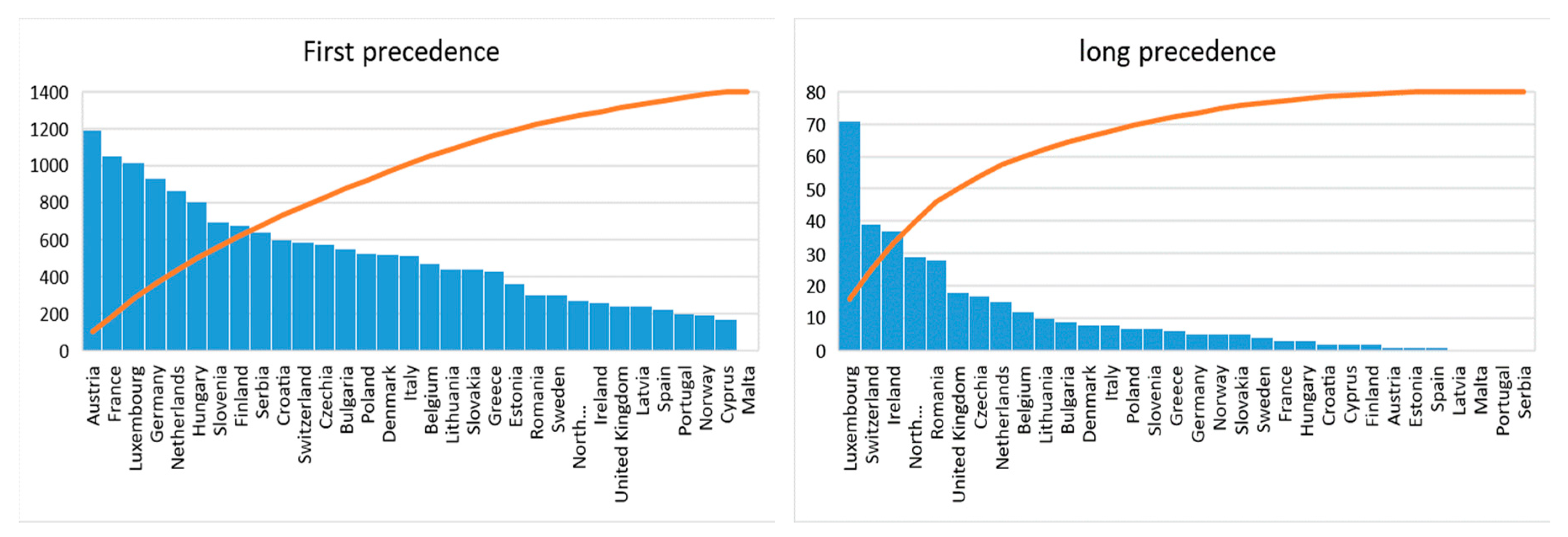
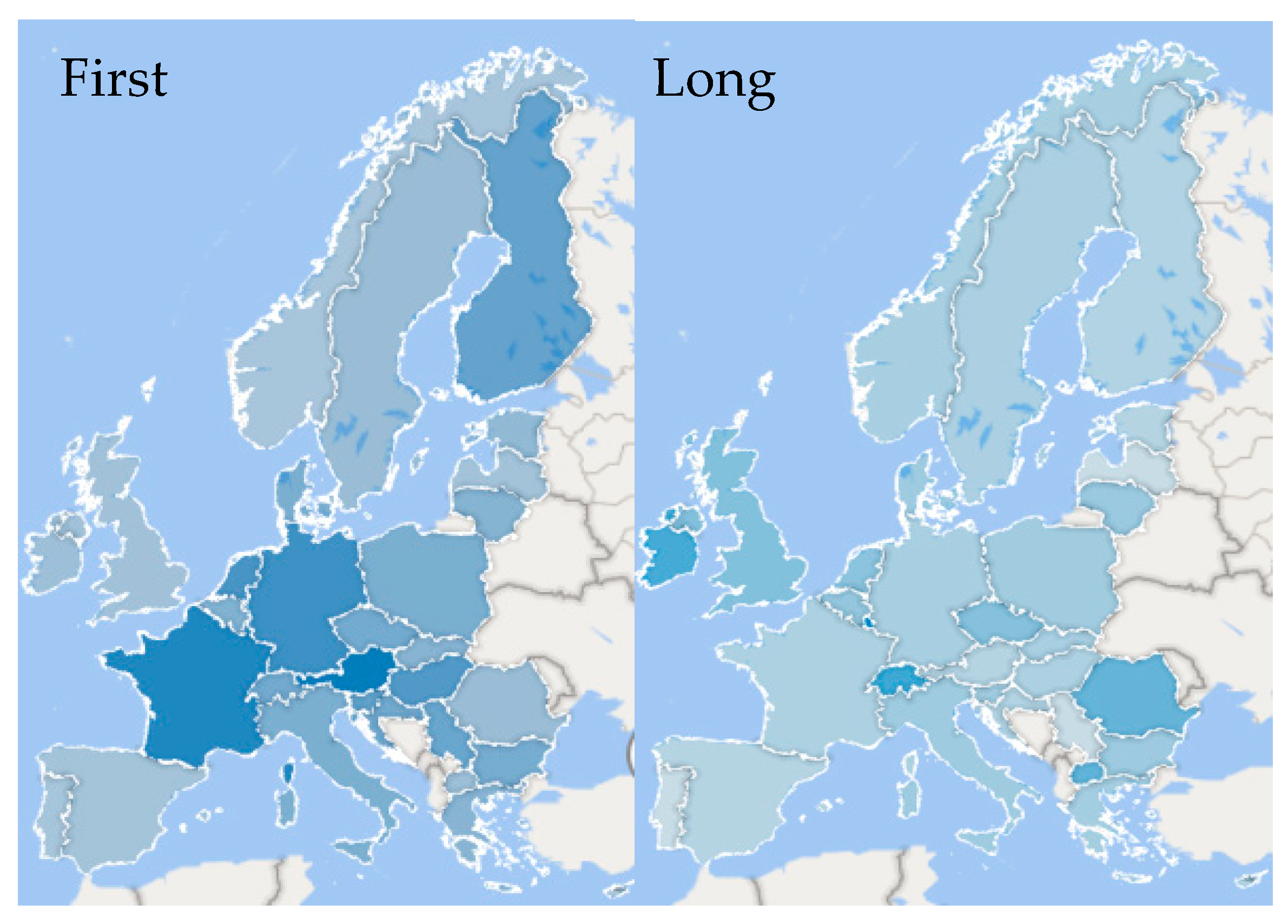
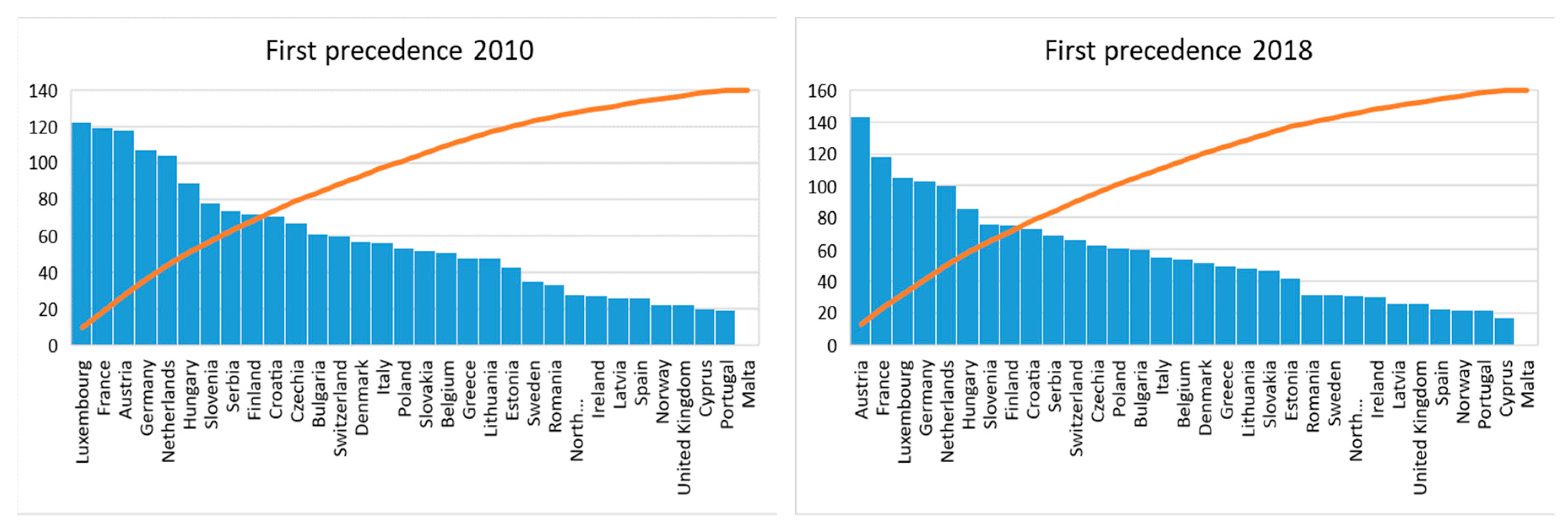
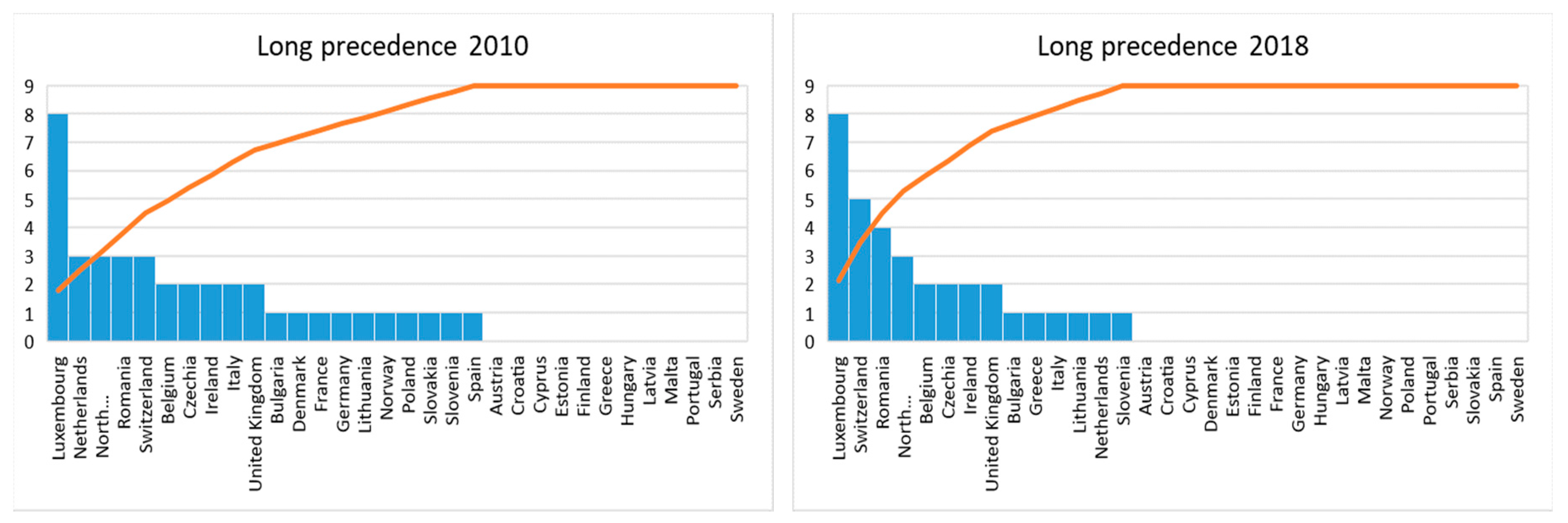
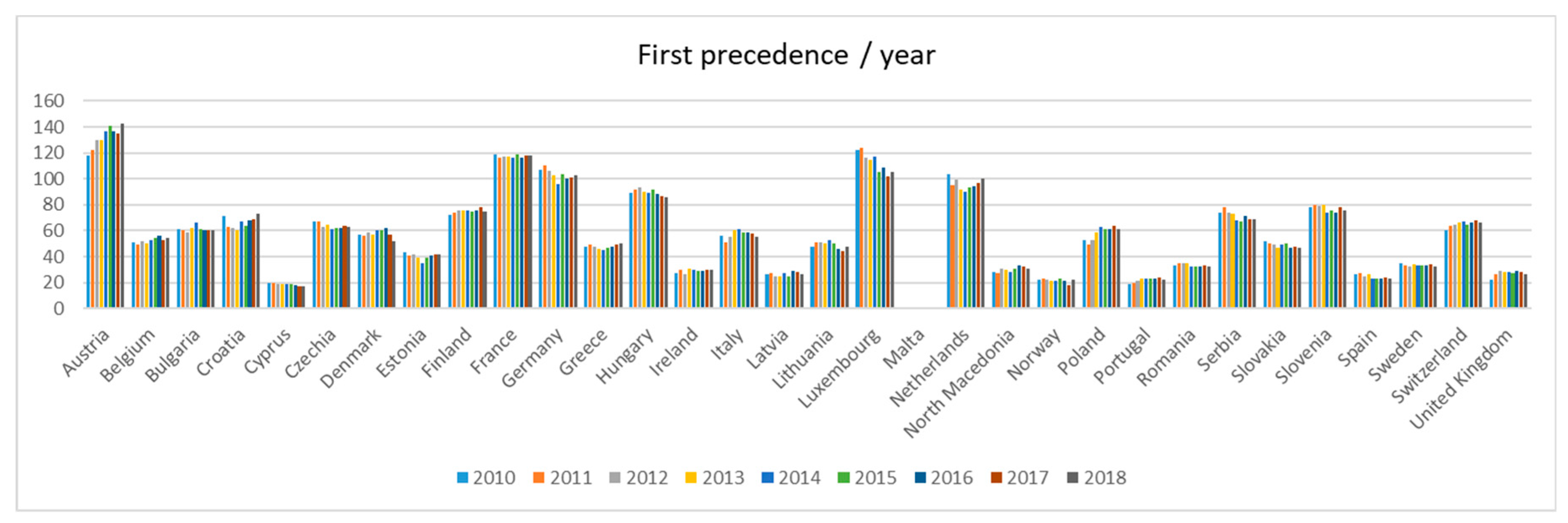
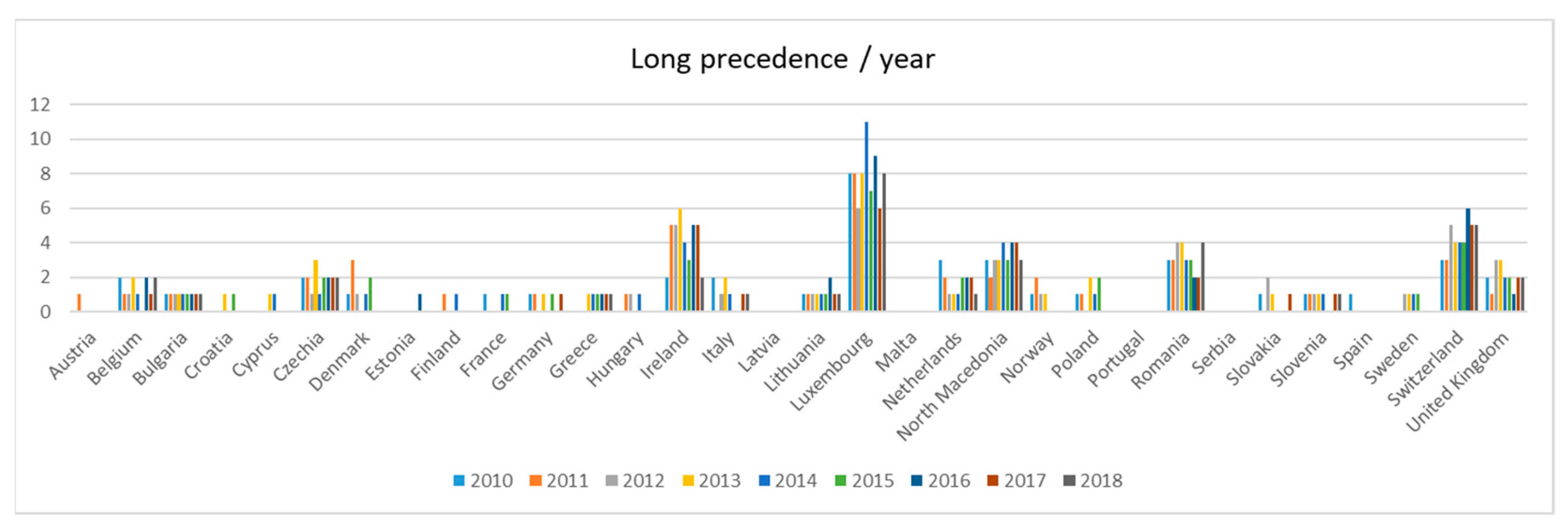
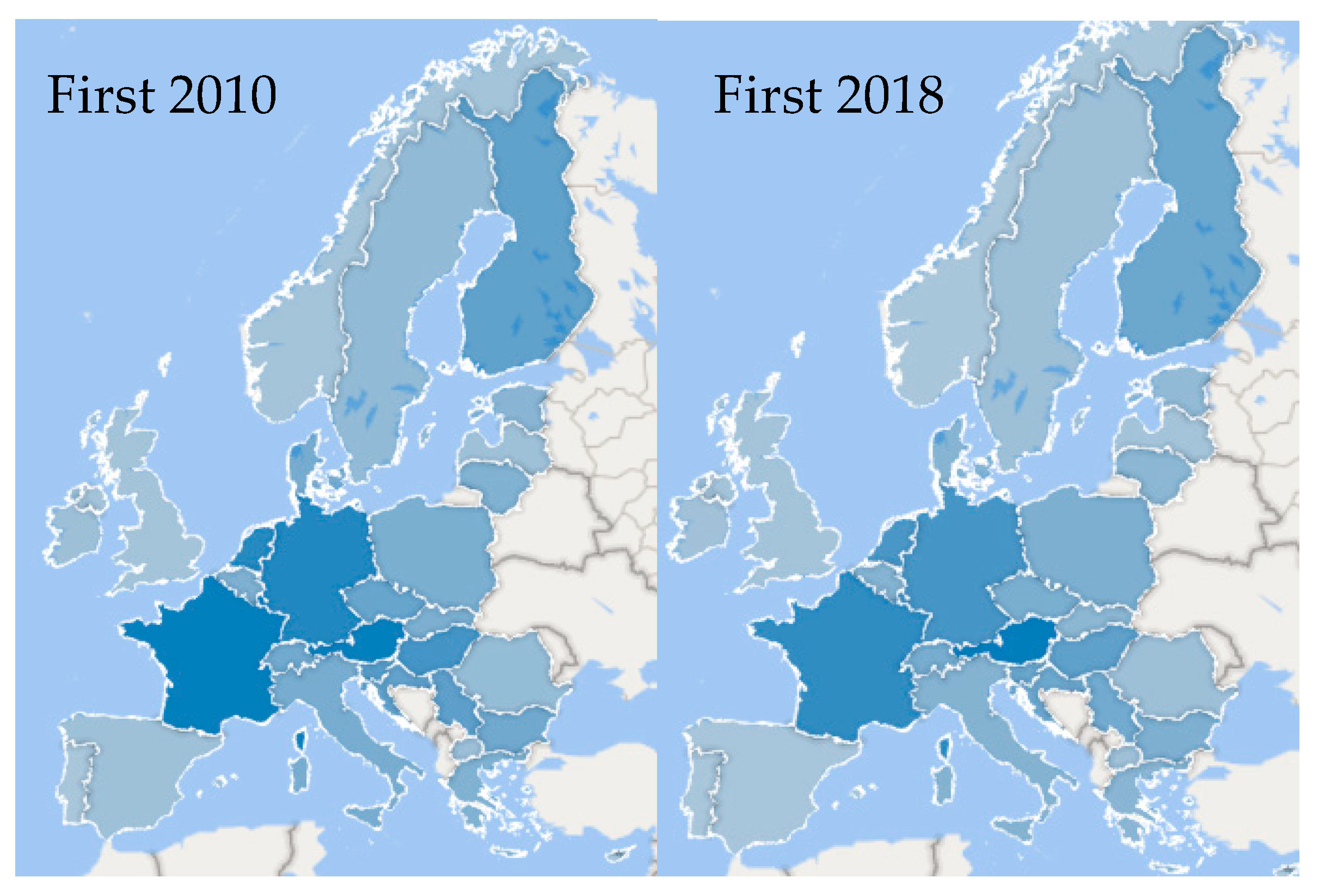
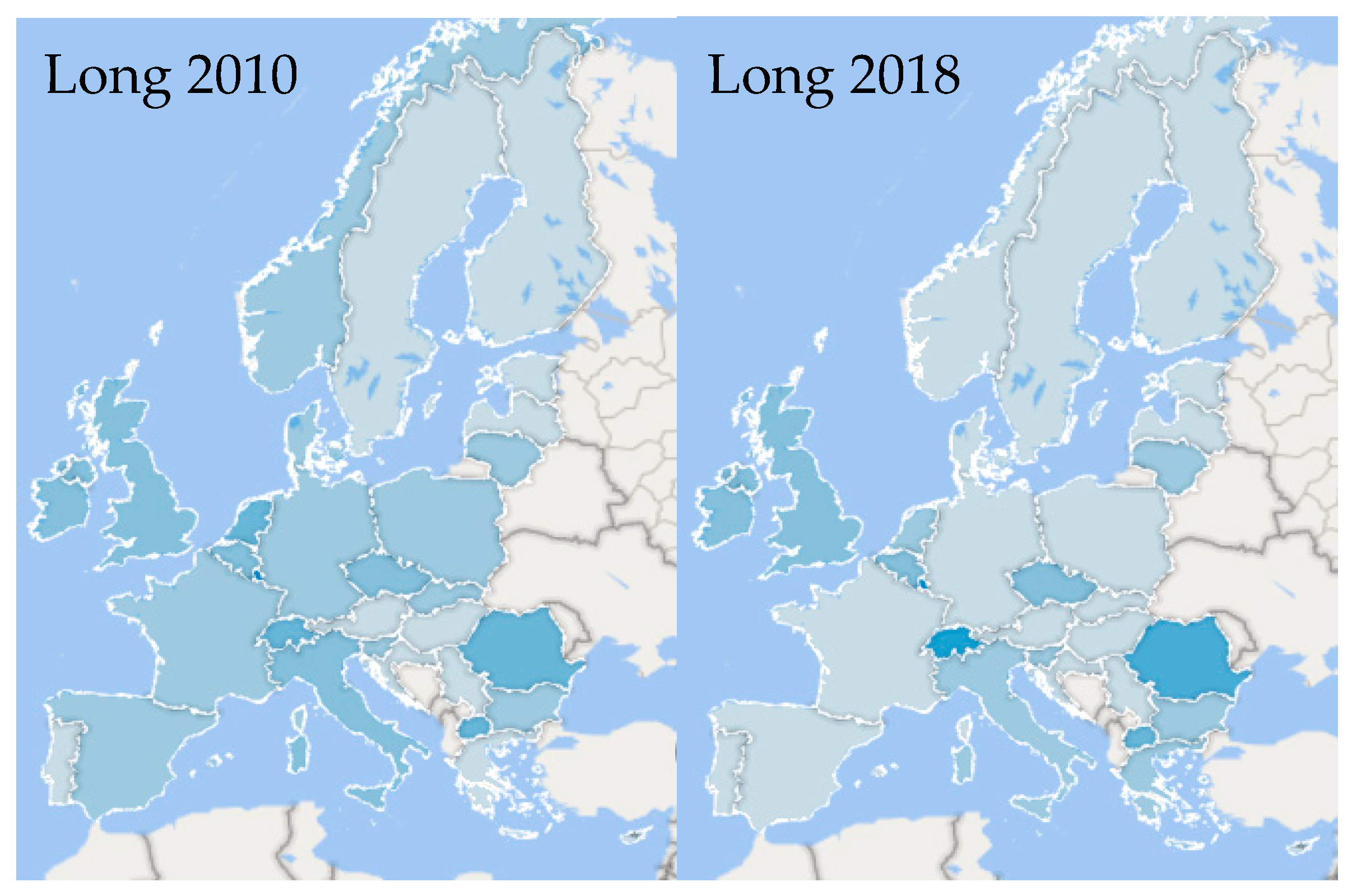
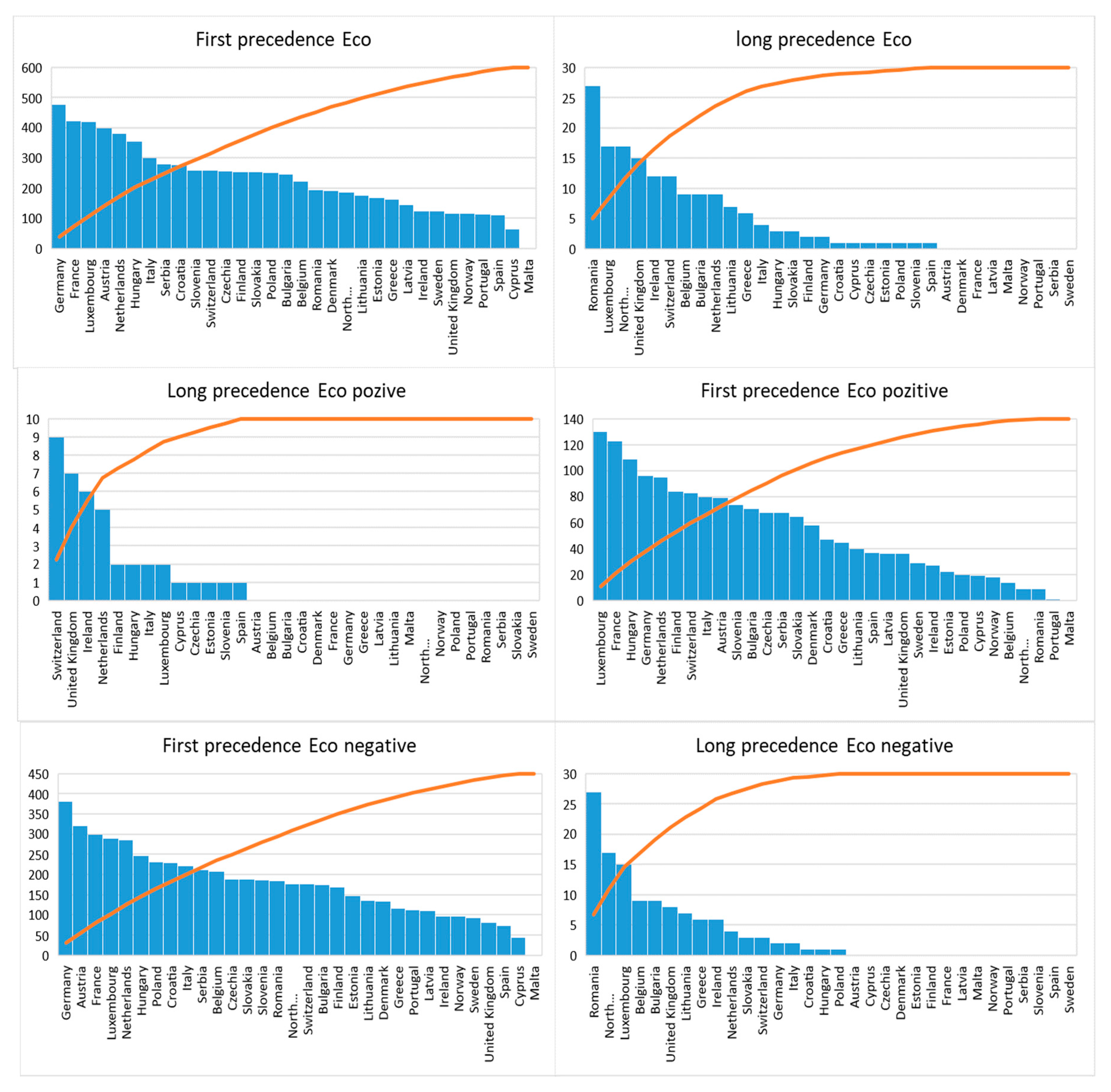
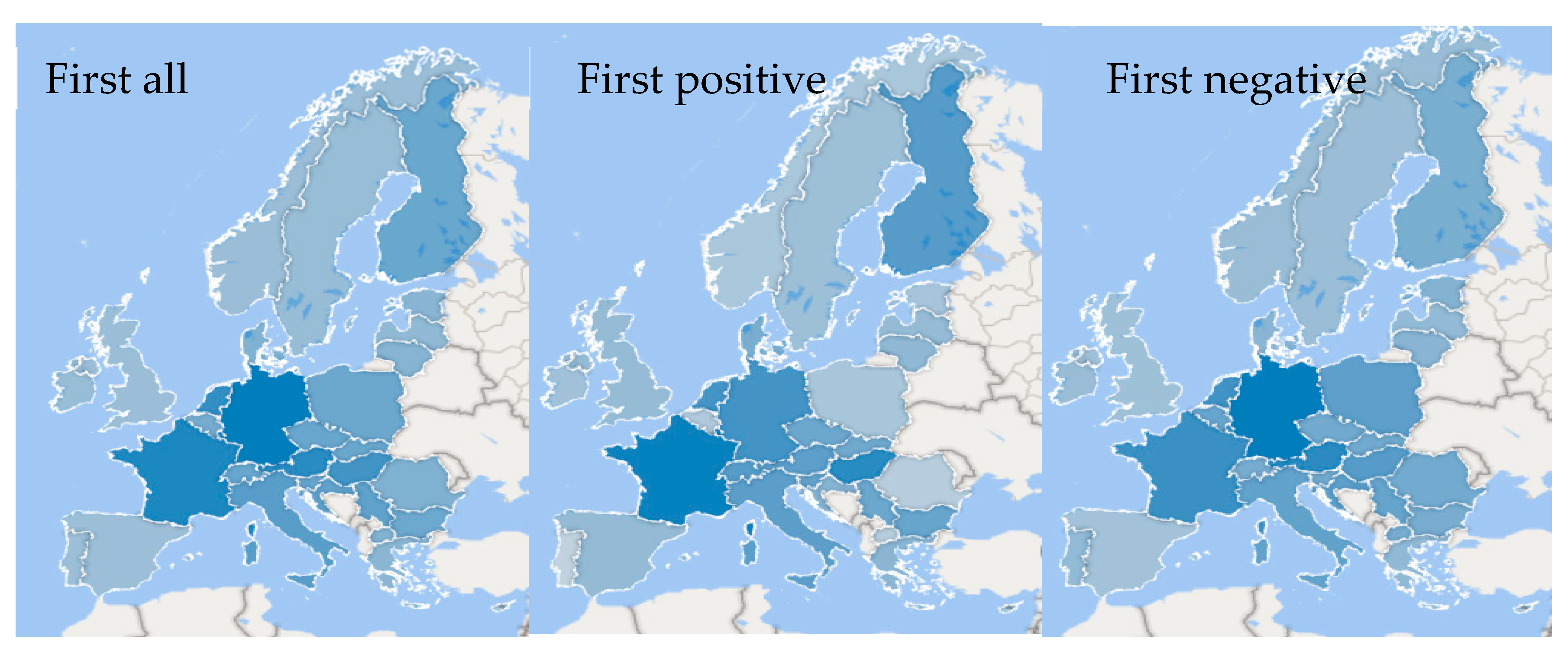
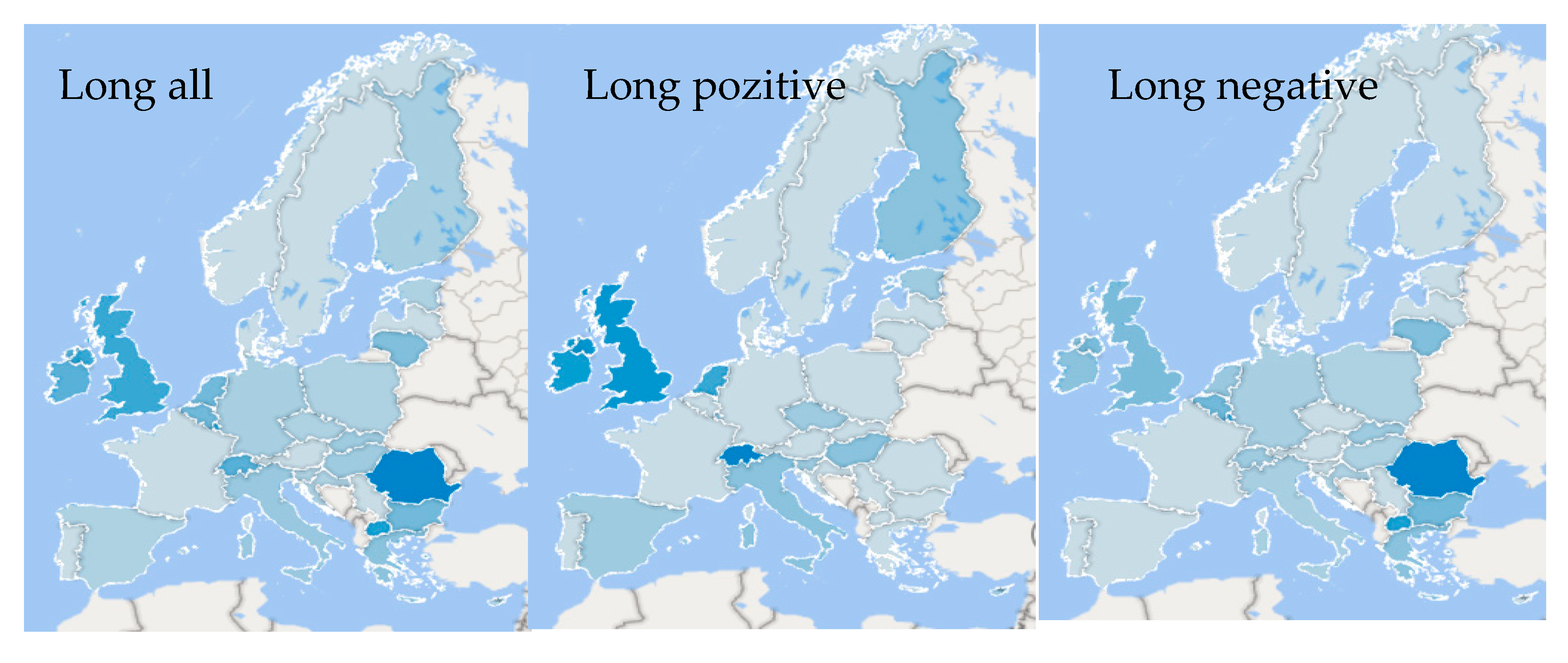
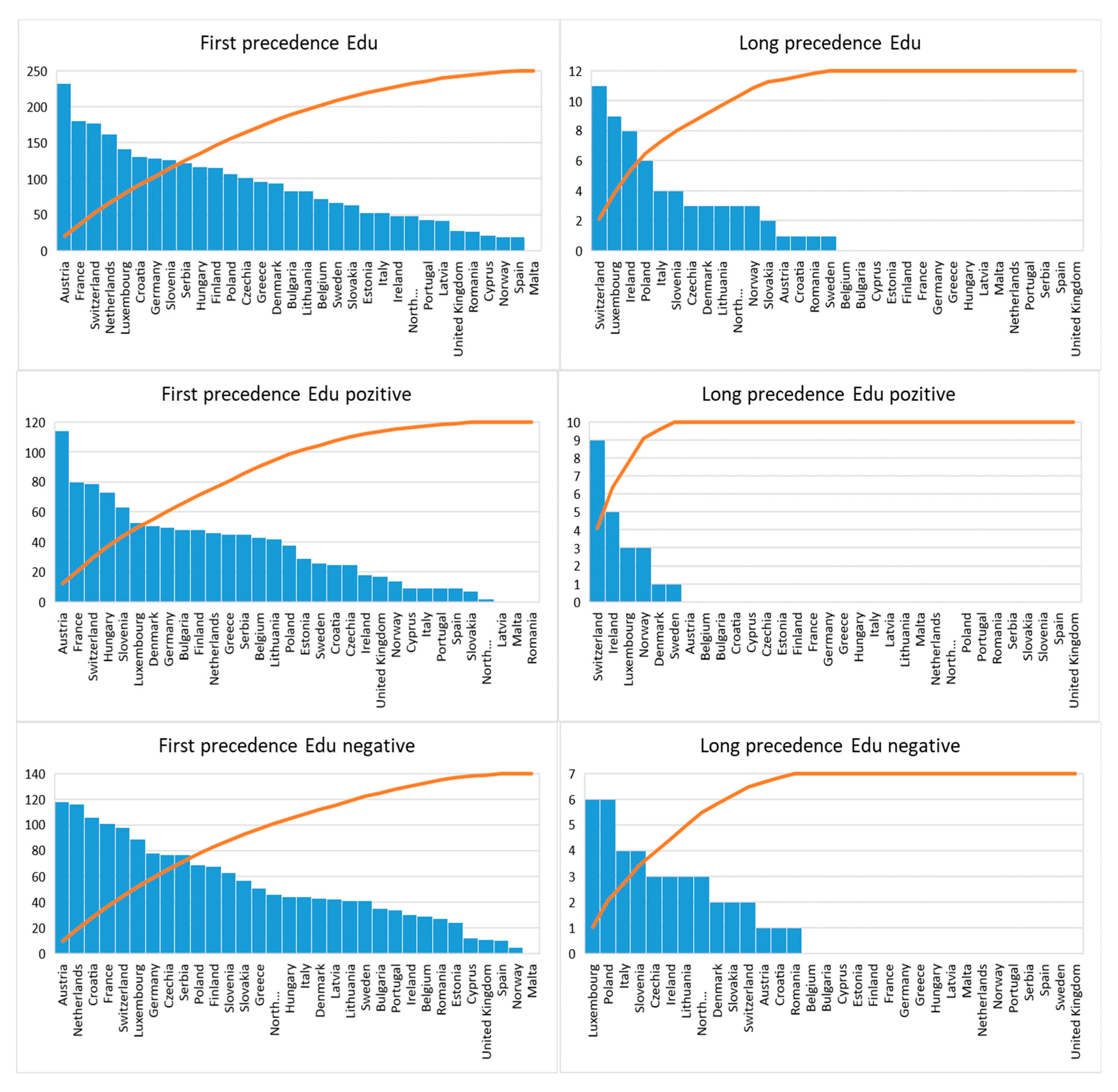
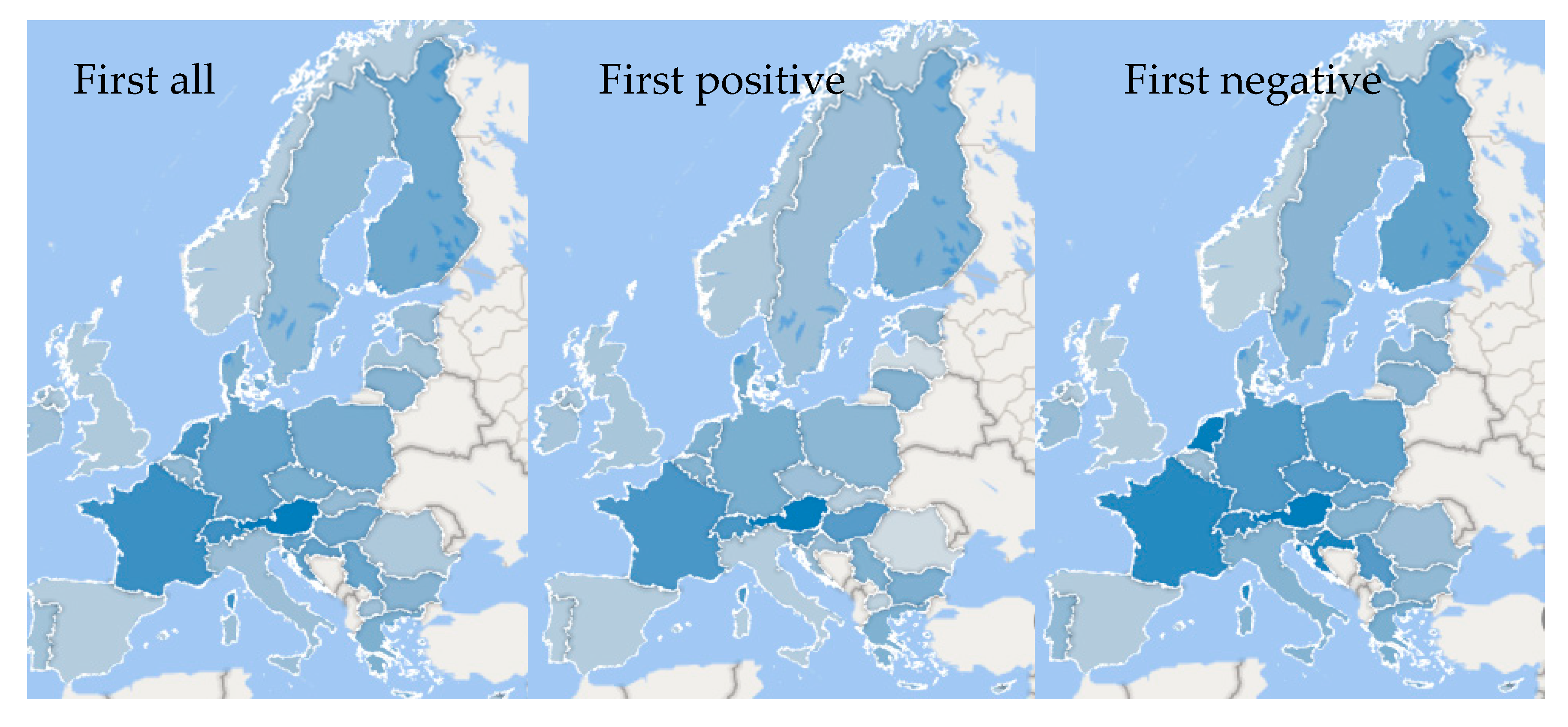
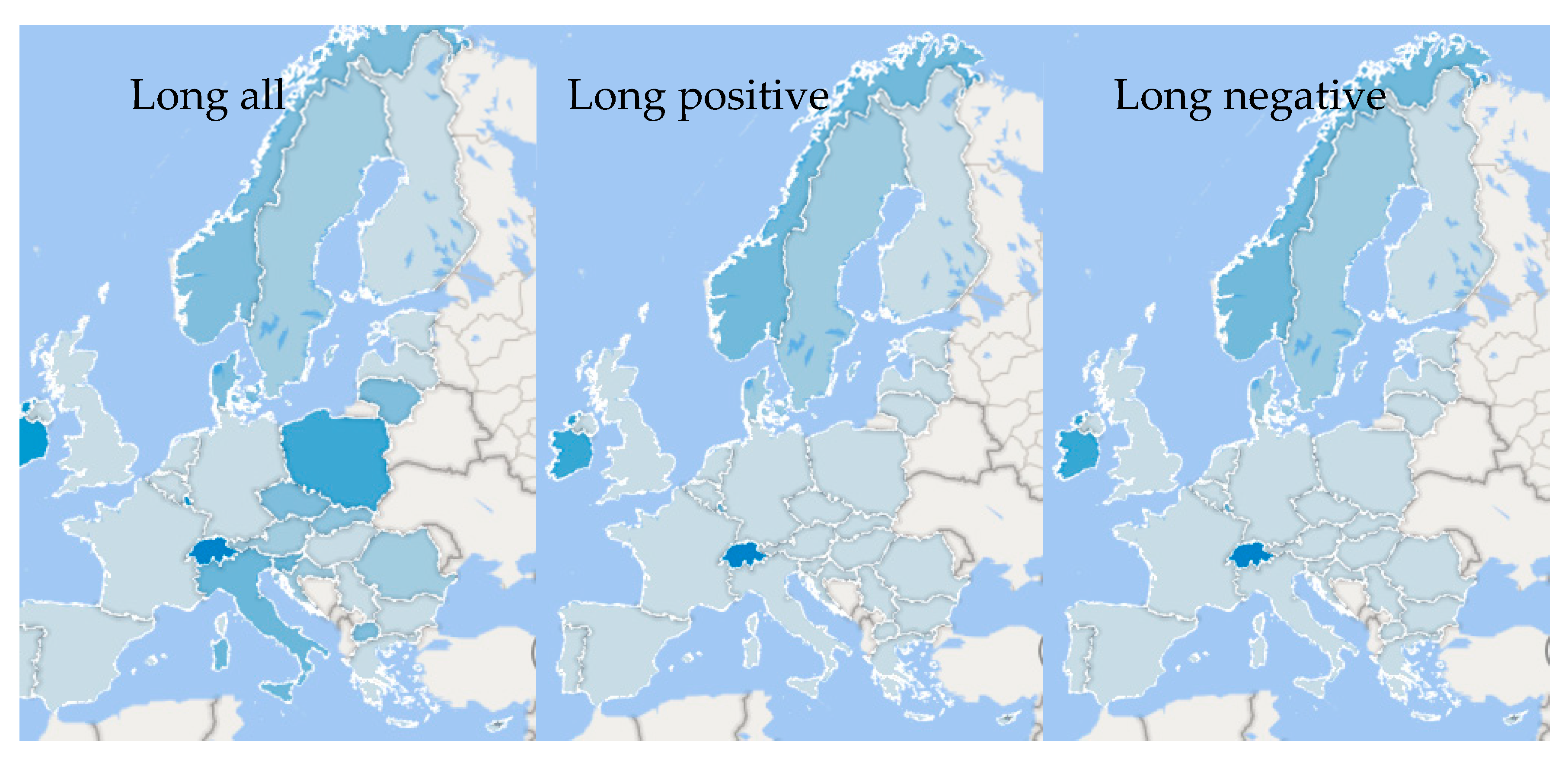
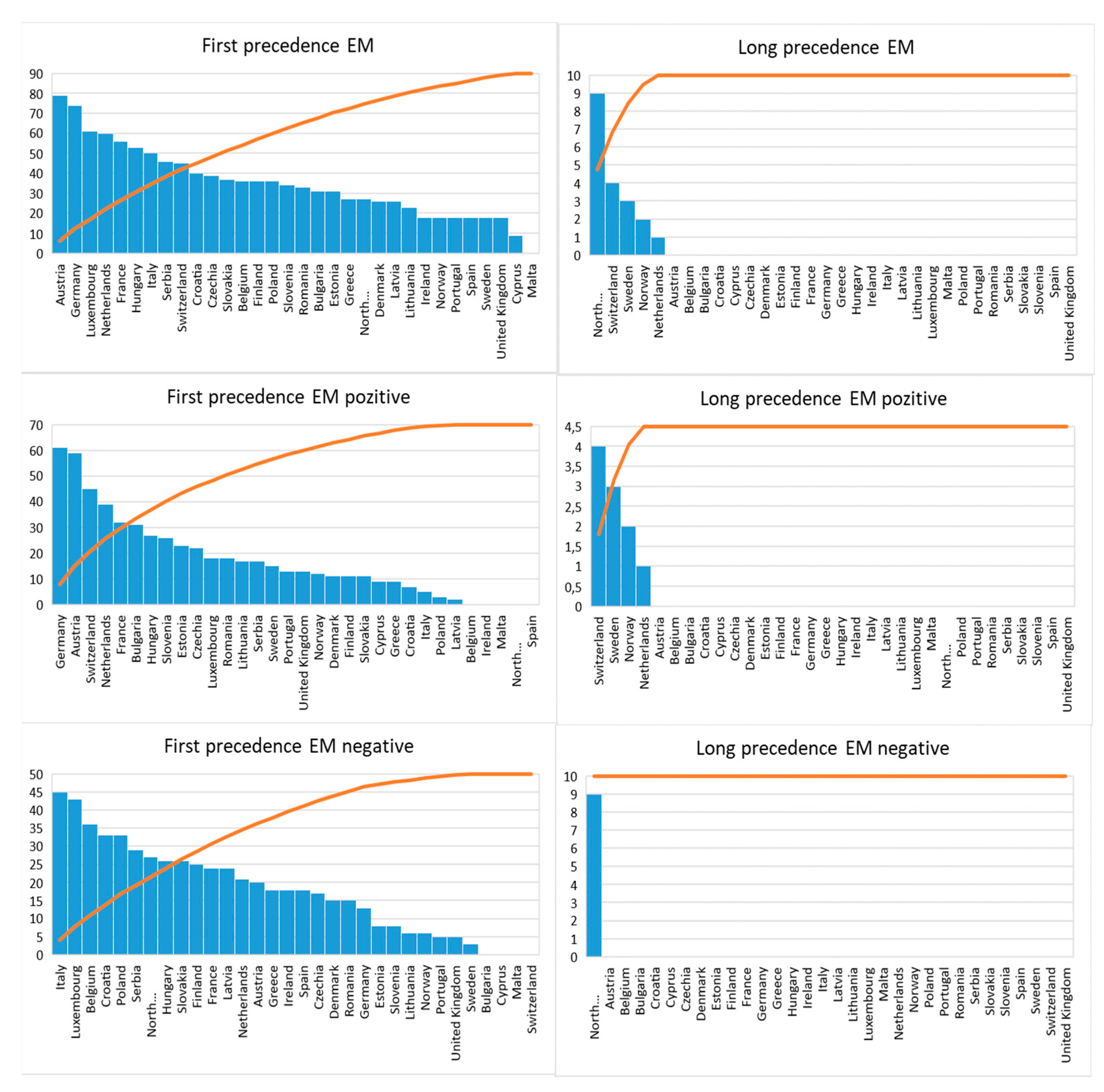


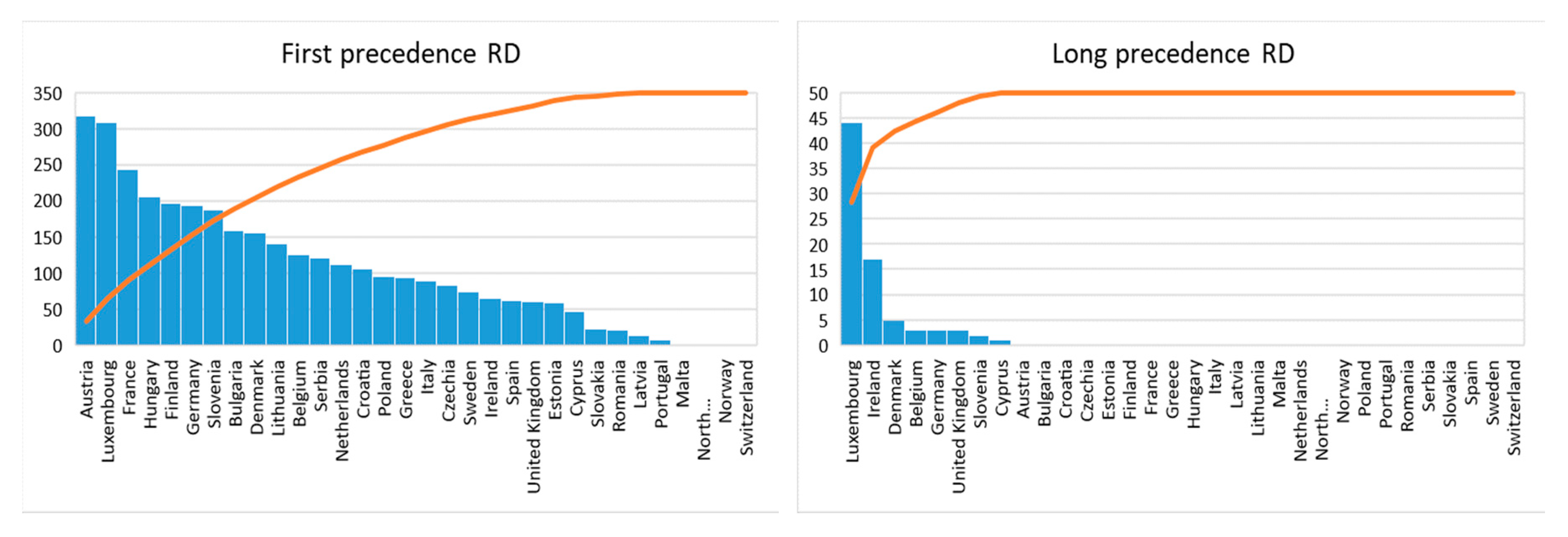

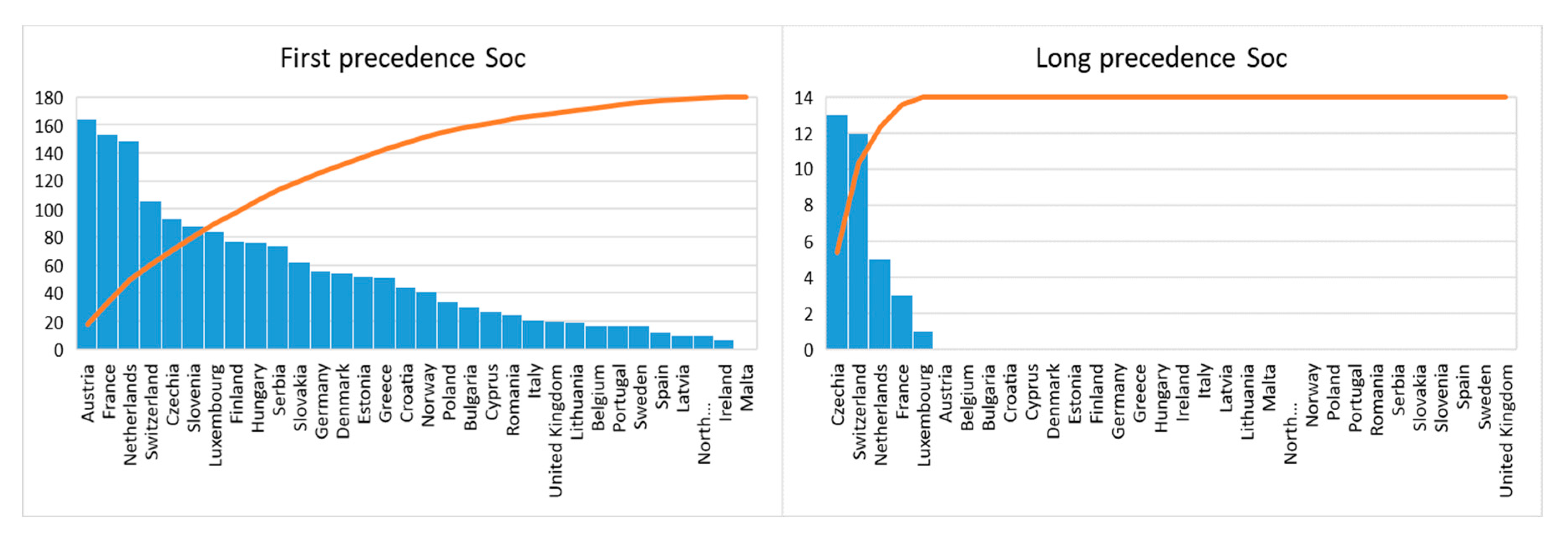
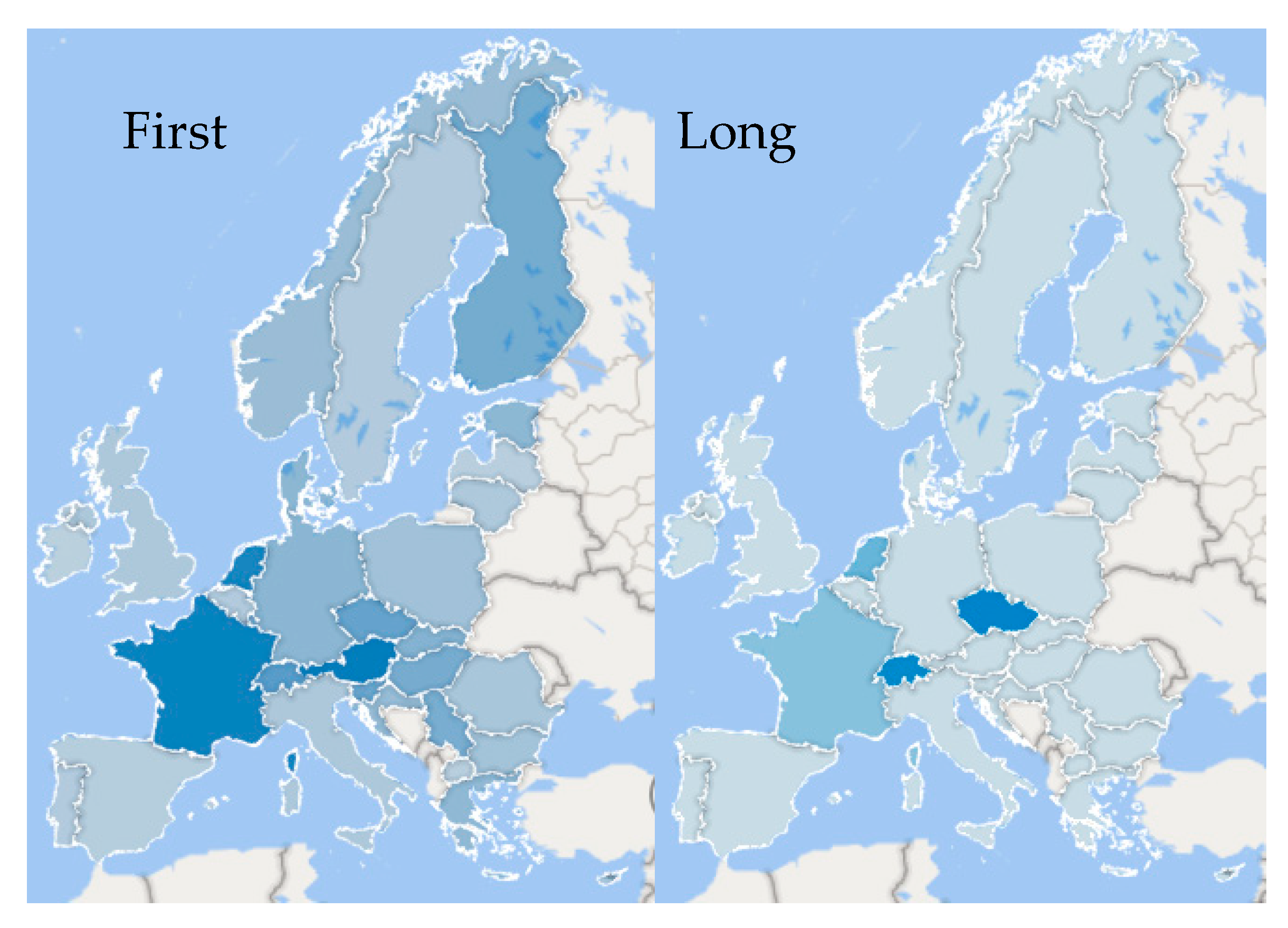
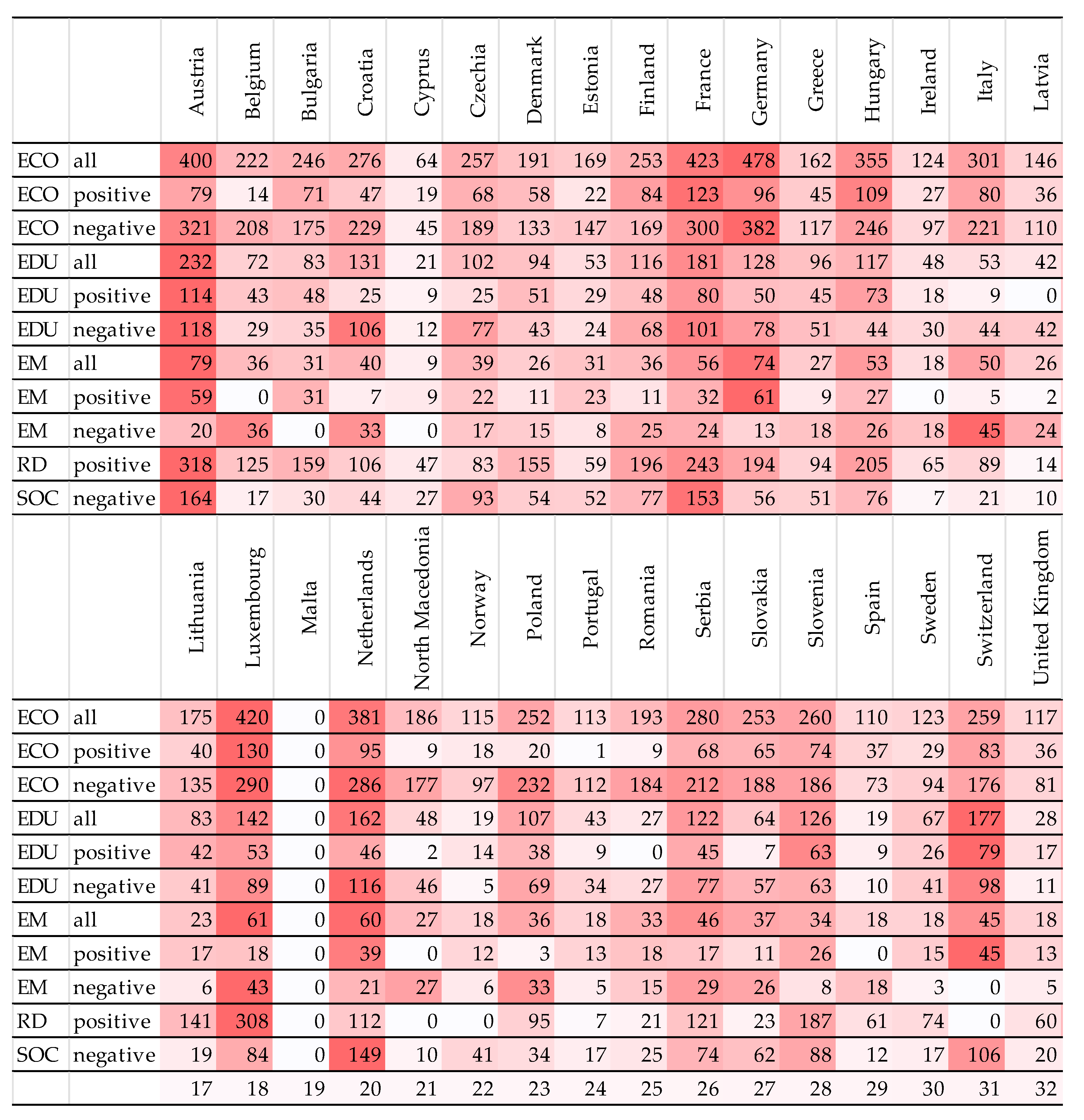
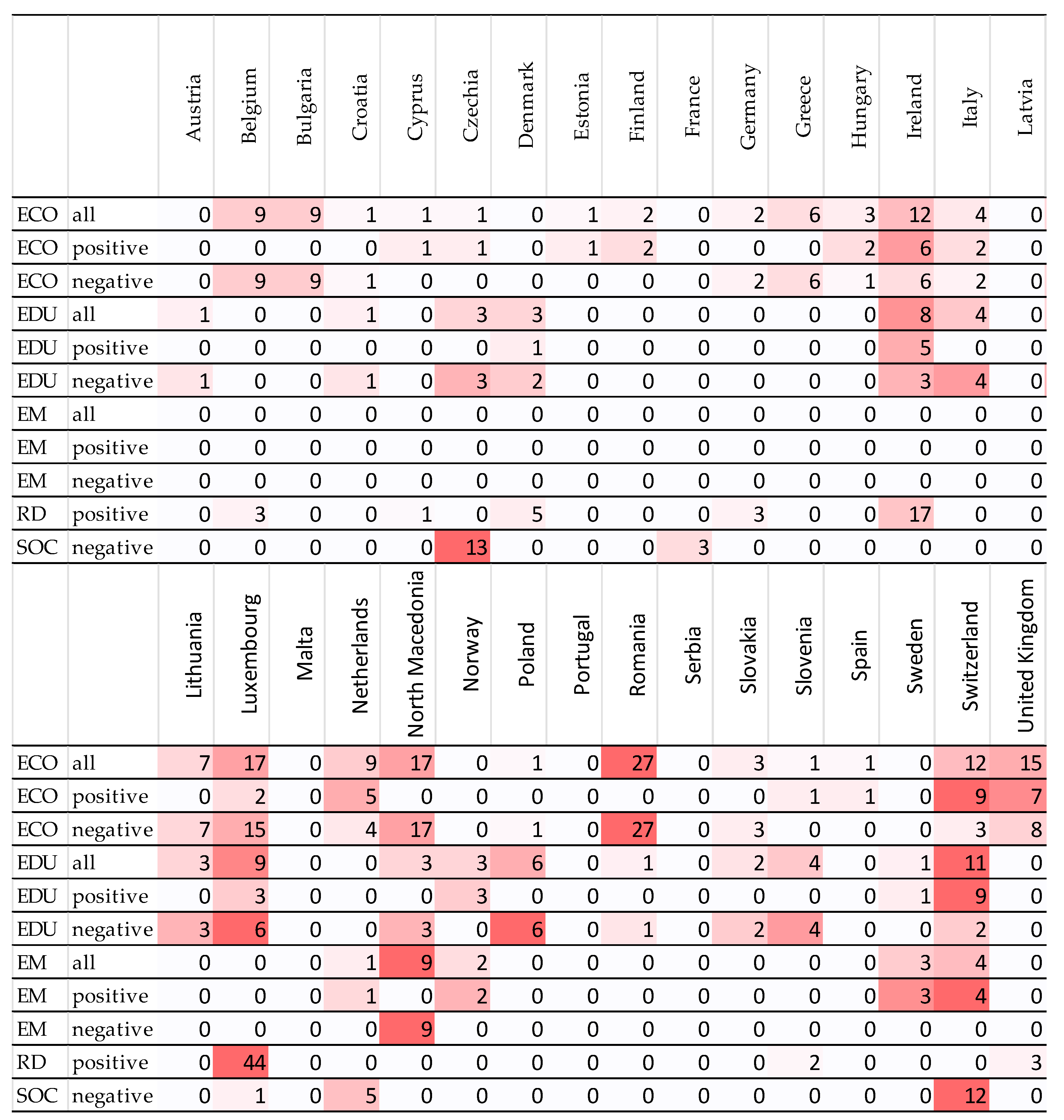





| Country | Industrial Plan |
|---|---|
| Germany | High-Tech Strategy 2020 |
| France | La Nouvelle France Industrielle (The New Industrial France) |
| United Kingdom | Future of Manufacturing |
| United States | Advances Manufacturing Partnership |
| Czechia | Industry Initiative 4.0 |
| Slovakia | Proposal of the Intelligent Industry Action Plan of the Slovak Republic |
| China | Made in China 2025 |
| Singapore | Research, Innovation and Enterprise |
| South Korea | Innovation in Manufacturing 3.0 |
| Italy | Impresa 4.0 |
| Study | Circuit | Methods | Benefits of the Study | Negative of the Study | Specification of Factors |
|---|---|---|---|---|---|
| Bai (2013) WoS Con. | Spatial mobility, circulation movement, tourism | Multi-agent systems, simulation | Problem identification: system analysis is no longer enough to describe the spatial architecture of the industry | addressed in the conceptual framework for the intelligent tourism information system | Environmental, sociocultural, and economic impacts, |
| Birkel et al. (2019), Jour. Q3, Q2 | Industry 4.0 Triple Bottom Line, risk management | Risks identification that arise within the framework of Industry 4.0 | empirical study | Ecological, environmental | |
| Braccini and Margherita (2019), Jour. Q3, Q2 | Industry 4.0 Triple Bottom Line | Case study | Confirmed the relevance of the factors affecting the individual | Only the case study | Ecological, environmental |
| Büchi et al. (2020), Jour.Q1 | Industry 4.0 | Regression models | Practical research | Only Italy comparation | Used technologies, value chain, future investments, perceived opportunities |
| Coldwell (2019) Jour. Q1, Q2 | Digitization, automation | Secondary data analysis | Theoretical model, extensive literature research | general conclusions | Employment, social environment, labor market, corporate social responsibility, |
| Corallo et al. (2020) Jour Q1 | Business performance, cybersecurity | Analysis, correlation | Knowing and evaluating in advance the main critical assets | General | Employment, social environment, manufacturing, digitalization |
| Cruz-Cárdenas et al. (2019) Jour.Q1 | Technology, demographics, cultural value economy | Comparison structural equation models | Comparative study | Only two states Ecuador and Russia | Demographic factors, technology, cultural |
| Čičváková (2017) | Industry 4.0, terminology, terms | Description | Summary of terms | General | Labor market |
| Deng et al. (2018) Jour. Q1, Q2 | Allocation of resources | Multi-agent systems, | Modeling with agents | Not directly related to Industry 4.0 | -- |
| Dev et al. (2020) Jour. Q1 | Industry 4.0, reverse logistics, statistic methods | Mathematical modeling | Instructions for managements | Hypothetical case | Environmental and economic |
| Efremov and Vladimirova (2019) WoS. Con. | Globalization, globalization factors, | Analysis, compression | Analysis of globalization benefits | General conclusions | Globalization index |
| Fonseca (2018) WoS Con | Industry 4.0, impacts of digitization | Literature research, identification of keywords | Summarizes political, economic, social, technological, environmental and legal issues, concretization of strategies and new business models | General conclusions | Spectrum of Industry 4.0-related factors, |
| Galetska et al. (2019) Jour. WoS | Industry 4.0, globalization, social responsibility, sustainable development | Compaction, summation, time series | Specification of social responsibility | Low data uptime | Social environment, social responsibility, degree of globalization, employers’ social contribution |
| Helmi et al. (2019) WoS Con | Industry 4.0, education | Systematic describes | Strengthening learning in STEM education | Narrow population group | Educational factors |
| Hermann et al. (2016) WoS Con | Industry 4.0, reverse logistics, | Systematic literature review | Comprehensive literature search | General conclusions | Smart Factory, IoS, IoT |
| Hofmann et al. (2019) | Supply chain management 4.0 Industry 4.0 | literature review, summary of supply chain management | specifically designed topics for academic research | general facts | Customer factors, |
| Charnley et al. (2019) Jour. Q3, Q2 | Simulations, circulatory processes | Discrete simulation, primary analysis | Circular economic model focusing on product life | Close focus (Great Britannia, automotive industry) | Economic, manufacturing, digital intelligence |
| Kliestik et al. (2018) Jour. Q1, Q2 | Finance, banking, bankruptcy | Robust analysis, prediction tools | Prediction model, specification of risk factors | Close focus on banking | Factors related to management behavior, risk factors |
| Korbel (2015) Prof. P. | Industry 4.0, genus of production | Description | Information character | Informative character | -- |
| Koren (2018) WoS Con | Automation, manufacturing, services | Statistical data analysis | Data analysis of the labor market in the Czech Republic | Narrow focus, mostly | Social impacts, employment, legislation, education |
| Kagermann et al. (2013), SD | Industry 4.0 | Theory, description | Strategic materials | Germany strategic | Industry, innovation |
| Karabegović et al. (2020), WoS Con | Business paradigms, Industry 4.0 | Theory description | Industry 4.0 business data analysis | general specifications | Manufacturing process |
| Liang et al. (2017) WoS Con | Economic growth | Simulation, analytical pathway | Prediction of economic growth | general conclusions | Economic growth factors |
| Liao et al. (2017), Jour. Q1, Q2 | Industry 4.0 | Systematic literature review | Identification of Industry 4.0 key expressions | only the comparison | Basic data, keywords |
| Machado et al. (2019) Jour. Q1, Q2 | Sustainable manufacturing, Industry 4.0 | Literature review | Identification of Industry 4.0 key expressions | only the comparison | Group of technological factors |
| Masud et al. (2019), Jour. Q1, Q2 | Triple Bottom Line, organizational strategy | Structured questionnaire, literature review | Business management, especially in the policy and strategy area | Only a sample of 250 employees from Bangladesh | Social responsibility, strategic performance |
| Manda and Soumaya (2019) WoS Con | Industry 4.0, developing countries, state concessions | Comparison, description, analysis | Analysis of the national strategy | focus on South Africa | Socio-technical |
| Min et al. (2019) Jour. Q1 | Industry 4.0, innovation | Comparative study | Specification of practical implications | theoretical approach to the determination of national policy strategies is not complete | Factors related to ICT |
| Pejic-Bach et al. (2020), Jour. Q1 | Industry 4.0, employment | Topic mining | Comprehensive survey of demanded jobs | only text mining without feedback | Human resource management, education, smart factory |
| Prinz et al. (2018) Jour. Q1, Q2 | Industry 4.0, Smart Factory | Comparison | Summary information about Industry 4.0 | general specifications | -- |
| Reischauer (2018), Jour. Q1 | Identity of Industry 4.0 long wave theory | Comparison, description | Interdisciplinary work | Very old citation | Triple helix factors, technology and innovation factors |
| Storolli et al. (2019) WoS Con | Industry 4.0, Smart City | Comparison, description | Smart City specifications | general specifications | Factors and keywords related to Smart City |
| Tang and Yi (2018) Jour. Q1, Q2 | Multiagent approach, coordination, distributed optimization problem | Simulation | Use of local information for analyses | limited interpretation circuit | -- |
| Tůma (2017) Prof. I. P. | Industry 4.0, positives, negatives | Description | Information character | informative character | General recommendations |
| Valbuena et al. (2008) Jour. Q1, Q2 | Agriculture, multi-agent analyses | Case study, multiagent systems | Multi-agent systems model | Method described in this paper has some limitations | Production scale, environmental, social (lifestyle) |
| Valenčík (2019) Mon. | Comparative factual characteristics of the 21st century | Political economic analysis | Industry 4.0 Criticism | Lack of practical conclusions | Comprehensive set of recommended identifiers |
| Veselica (2019) WoS Con | Industry 4.0, competitiveness | Complications, analysis | comprehensive comparison | Limited interpretation | Indicators for competitiveness and innovation, Global Competitiveness Index |
| Yang et al. (2019) Jour. Q1 | Energy | Distributed optimization of multi-agent systems | Detailed overview of existing distributed optimization algorithms, coordination of distributed energy resources | Close focus, general conclusions | Energy economic factors |
| Yun and Liu (2019) Jour. Q3, Q2 | Industry 4.0, sustainability, innovation ecosystem | Literature review and analysis | Comparisons of industry, education, government, and society | Conceptual model needs to be further validated | Social, environmental, economic, cultural, policy, and knowledge sustainability, Innovation |
| Zhang et al. (2019) Jour. Q1 | Industry 4.0, customer, marketplace, Cloud systems | Literature review, framework analysis, case studies | Real experiment | Experiment built on simplified reality | ICT factors, industry factors, marketplace indicators |
| Index | Factor | Effect | Note | Group |
|---|---|---|---|---|
| 1 | Total employment (resident population concept—LFS) | + | Percentage of total population, age group 20–64, total | Em |
| 2 | Total employment (resident population concept—LFS) | − | Percentage of total population, age group 20–64, female | Em |
| 3 | Gross domestic expenditure on R&D (GERD) | + | Percentage of gross domestic product (GDP) | RD |
| 4 | Early leavers from education and training by sex | − | From 18 to 24 years, total | Edu |
| 5 | Early leavers from education and training by sex | + | From 18 to 24 years, female | Edu |
| 6 | Tertiary educational attainment | + | From 30 to 34 years, total | Edu |
| 7 | Tertiary educational attainment | − | From 30 to 34 years, female | Edu |
| 8 | Resource productivity | + | Euro per kilogram, chain linked volumes (2010) | Eco |
| 9 | Purchasing power standard (PPS) per kilogram | − | Eco | |
| 10 | Index resource productivity | + | Index, 2000 = 100 | Eco |
| 11 | Eco-innovation index | + | Index, EU = 100 | RD |
| 12 | People at risk of poverty or social exclusion | − | Percentage of total population, | Soc |
| 13 | People at risk of poverty after social transfer | − | At risk of poverty rate (cut-off point: 60% of median equivalized income after social transfers) | Soc |
| 14 | Severely materially deprived people | − | Percentage | Soc |
| 15 | Agriculture, forestry and fishing | − | Percentage of total (based on persons) | Eco |
| 16 | Industry (except construction) | − | Percentage of total (based on persons) | Eco |
| 17 | Construction | − | Percentage of total (based on persons) | Eco |
| 18 | Wholesale and retail trade, transport, accommodation, and food service activities | − | Percentage of total (based on persons) | Eco |
| 19 | Information and communication | + | Percentage of total (based on persons) | Eco |
| 20 | Financial and insurance activities | − | Percentage of total (based on persons) | Eco |
| 21 | Real estate activities | − | Percentage of total (based on persons) | Eco |
| 22 | Professional, scientific, and technical activities; administrative and support service activities | Percentage of total (based on persons) | Eco | |
| 23 | Public administration, defence, education, human health and social work activities | − | Percentage of total (based on persons) | Eco |
| 24 | Arts, entertainment and recreation; other service activities; | − | Percentage of total (based on persons) | Eco |
| 25 | HRST: Persons with tertiary education (ISCED) and/or employed in science and technology | + | Percentage of active population, From 15 to 74 years | RD |
| 26 | SE: Scientists and engineers | + | Percentage of active population, From 15 to 74 years | RD |
| 27 | HRSTO: Persons employed in science and technology | + | Percentage of active population, From 15 to 74 years | RD |
| 28 | HRSTE: Persons with tertiary education (ISCED) | + | Percentage of active population, From 15 to 74 years | RD |
| 29 | HRSTC: Persons with tertiary education (ISCED) and employed in science and technology | + | Percentage of active population, From 15 to 74 years | RD |
| First | Long | ||||||
|---|---|---|---|---|---|---|---|
| Min. | Max. | Avg. | Med. | Min. | Max. | Avg. | Med. |
| 70 | 81 | 76 | 76 | 6 | 19 | 13 | 13 |
| First | Long | ||||||
|---|---|---|---|---|---|---|---|
| Min. | Max. | Avg. | Med. | Min. | Max. | Avg. | Med. |
| 0 | 1193 | 5,088,125 | 493 | 0 | 71 | 1,109,375 | 5.5 |
| 2010 | 2018 | ||||||||||||||
|---|---|---|---|---|---|---|---|---|---|---|---|---|---|---|---|
| First | Long | First | Long | ||||||||||||
| Min. | Max. | Avg. | Med. | Min. | Max. | Avg. | Med. | Min. | Max. | Avg. | Med. | Min. | Max. | Avg. | Med. |
| 0 | 122 | 56.5 | 52.5 | 0 | 8 | 1.25 | 1 | 0 | 143 | 56.5 | 53 | 0 | 8 | 1.06 | 0 |
| Effect | Precedence Group | Long | First | Long | First | Long | First | Long | First | Long | First |
|---|---|---|---|---|---|---|---|---|---|---|---|
| Eco | Eco | Edu | Edu | Soc | Soc | RD | RD | Em | Em | ||
| all | min | 0 | 0 | 0 | 0 | 0 | 0 | ||||
| all | max | 27 | 478 | 11 | 232 | 9 | 79 | ||||
| all | pr | 5.03 | 228 | 2 | 87.6 | 0.6 | 35 | ||||
| all | med | 1.5 | 234 | 0.5 | 83 | 0 | 33.5 | ||||
| positive | min | 0 | 0 | 0 | 0 | 0 | 0 | 0 | 0 | ||
| positive | max | 9 | 130 | 9 | 114 | 44 | 318 | 4 | 61 | ||
| positive | pr | 1.25 | 52.9 | 0.7 | 35 | 2.4 | 105 | 0.3 | 17.3 | ||
| positive | med | 0 | 46 | 0 | 33.5 | 0 | 91.5 | 0 | 13 | ||
| negative | min | 0 | 0 | 0 | 0 | 0 | 0 | 0 | 0 | ||
| negative | max | 27 | 382 | 6 | 118 | 164 | 13 | 9 | 45 | ||
| negative | pr | 3.8 | 175.4 | 1.3 | 52.7 | 52.8 | 1 | 0.3 | 17.7 | ||
| negative | med | 1 | 176.5 | 0 | 44 | 42.5 | 0 | 0 | 18 |
© 2020 by the authors. Licensee MDPI, Basel, Switzerland. This article is an open access article distributed under the terms and conditions of the Creative Commons Attribution (CC BY) license (http://creativecommons.org/licenses/by/4.0/).
Share and Cite
Botlíková, M.; Botlík, J. Local Extremes of Selected Industry 4.0 Indicators in the European Space—Structure for Autonomous Systems. J. Risk Financial Manag. 2020, 13, 13. https://doi.org/10.3390/jrfm13010013
Botlíková M, Botlík J. Local Extremes of Selected Industry 4.0 Indicators in the European Space—Structure for Autonomous Systems. Journal of Risk and Financial Management. 2020; 13(1):13. https://doi.org/10.3390/jrfm13010013
Chicago/Turabian StyleBotlíková, Milena, and Josef Botlík. 2020. "Local Extremes of Selected Industry 4.0 Indicators in the European Space—Structure for Autonomous Systems" Journal of Risk and Financial Management 13, no. 1: 13. https://doi.org/10.3390/jrfm13010013
APA StyleBotlíková, M., & Botlík, J. (2020). Local Extremes of Selected Industry 4.0 Indicators in the European Space—Structure for Autonomous Systems. Journal of Risk and Financial Management, 13(1), 13. https://doi.org/10.3390/jrfm13010013





